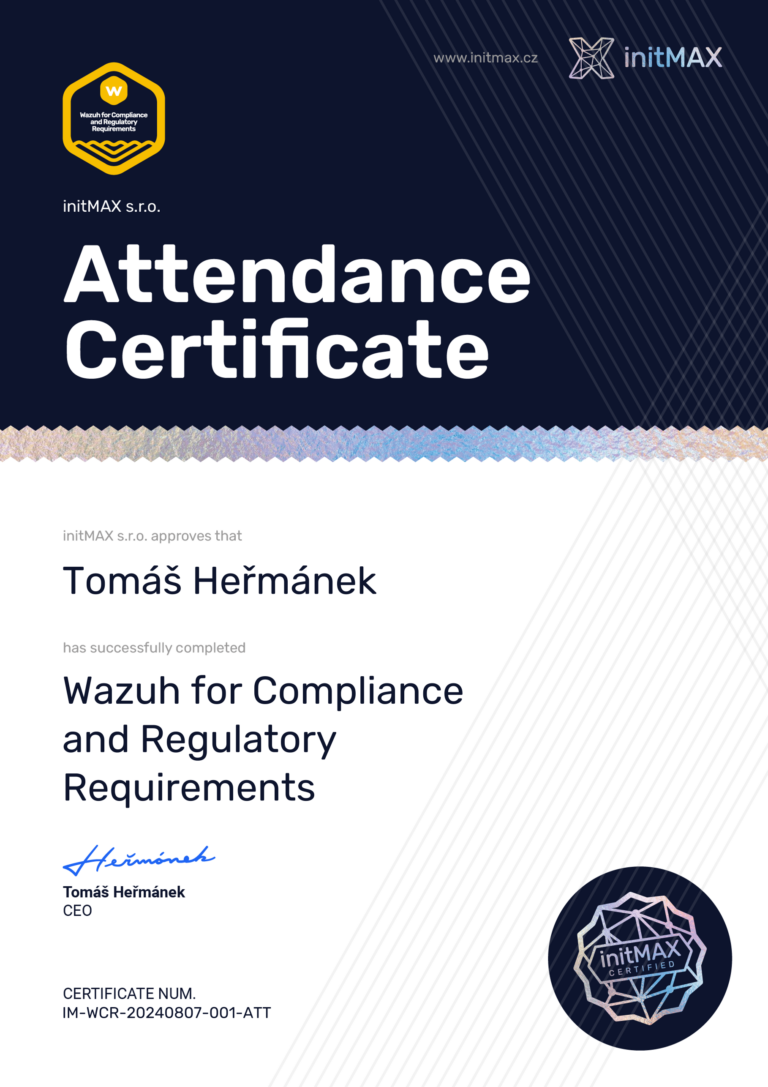
Wazuh for Compliance and Regulatory Requirements
This course is designed for compliance officers, IT auditors, and security professionals responsible for ensuring regulatory compliance. Participants will learn how to leverage Wazuh to meet compliance requirements for standards such as PCI DSS, GDPR, and HIPAA. The course includes practical labs and concludes with an exam.
Information about the course
| Designed for the product: | Wazuh |
|---|---|
| Group size: | Group of up to 15 students |
| Type of exam: | 45 min, theoretical |
| Requirements: | attendance certificate - Introduction to Wazuh (initMAX) |
| Previous tier: | Introduction to Wazuh |
| Course language: | English |
| Available online: | Yes |
| Course length: | 2 DAYS |
| Course price: | € 1,750 excluding VAT |
Course content
Day 1
- Overview of compliance requirements and Wazuh capabilities
- Configuring Wazuh for PCI DSS compliance
- Configuring Wazuh for GDPR and HIPAA compliance
Day 2
- Monitoring and reporting for compliance
- Automating compliance tasks with Wazuh
- EXAM
Vojtěch Mejstřík
Technical ConsultantAdditional information
Certificate
- After successfully passing the exam, you will obtain official initMAX certification

Course certificates and gifts
For all attendees

For passing the exam

